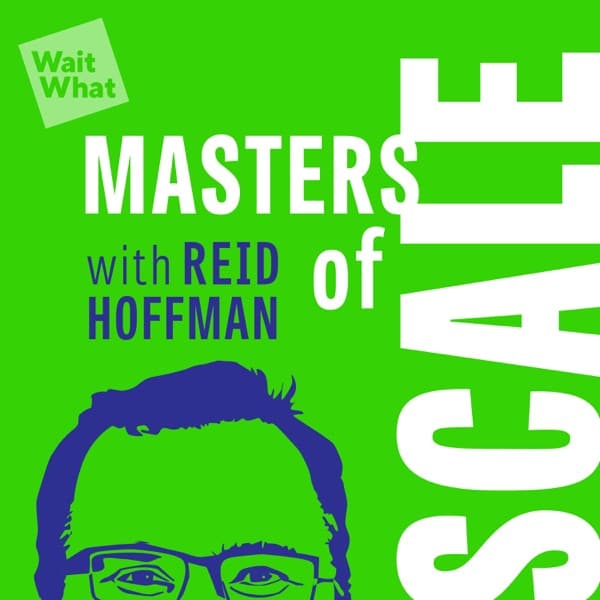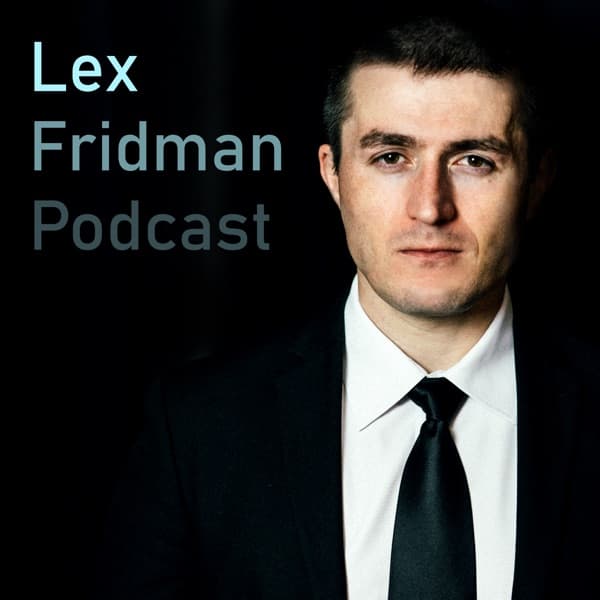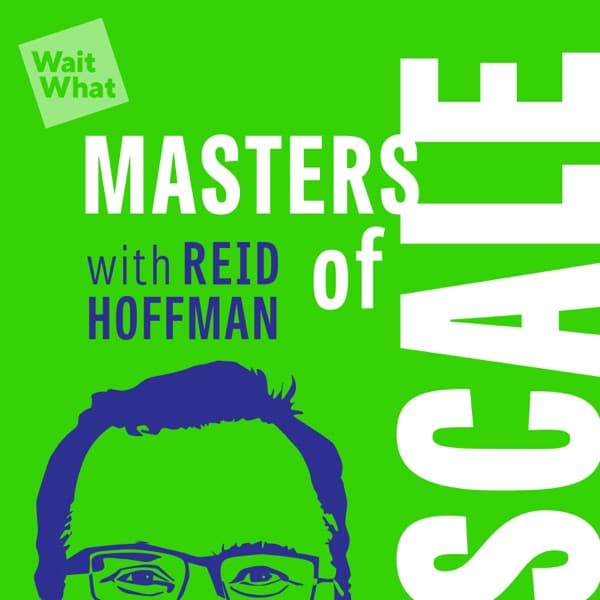a16z: The discussion highlights the rapid advancements in AI, particularly focusing on a Chinese research team's unexpected breakthrough, and emphasizes the need for the U.S. to adapt its policies to foster innovation rather than restrict it.
This Week in Startups: The discussion focuses on the hype around Palantir's valuation and its implications for investors and the market.
Fireship: Google's Gemini 2.0 is a cost-effective AI model that excels in real-world applications, despite not leading in benchmarks.
OpenAI: A nail technician uses ChatGPT to generate creative nail art ideas, enhancing her design process.
Modern Wisdom: The discussion explores the importance of focusing on meaningful life goals, balancing wealth with personal fulfillment, and the impact of relationships on happiness.
How I Built This with Guy Raz: The podcast episode features business advice for entrepreneurs, focusing on building brand awareness and overcoming challenges.
a16z Podcast: DeepSeek's release by a Chinese hedge fund highlights the potential of open-source AI models and challenges existing AI policies.
Masters of Scale: Atio is an AI-native CRM designed for modern businesses, offering AI-powered automations to streamline complex processes.
TechCrunch Startup News: Neuralc AI focuses on AI models for structured tabular data, aiming to enhance data workflows and analytics for commerce companies.
TechCrunch Startup News: Archive and Satira are innovating in the resale and surplus inventory markets, respectively, using technology to address environmental and economic challenges.
a16z - DeepSeek: AI's Sputnik Moment? Steven Sinofsky and Martin Casado Discuss
The conversation centers around a surprising AI model release by a Chinese research group, which caught the global community off guard due to its rapid development and low cost. This event is compared to historical technological shifts, emphasizing the importance of innovation over restrictive policies. The speakers argue that the U.S. should focus on fostering research and development rather than imposing export controls, as these have proven ineffective in preventing technological advancements abroad. They draw parallels to the internet's growth, suggesting that open collaboration and investment in domestic capabilities are crucial for maintaining a competitive edge. The discussion also touches on the potential for AI to transform industries, much like the internet did, and the importance of adapting business models to leverage these new technologies effectively.
Key Points:
- AI advancements are accelerating, with unexpected breakthroughs from global players like China.
- Restrictive policies, such as export controls, are ineffective and hinder domestic innovation.
- The U.S. should invest in research and development to maintain a competitive edge in AI.
- AI's impact will be similar to the internet's, requiring adaptable business models and open collaboration.
- The focus should shift from controlling technology to enabling innovation and application development.
Details:
1. 🚀 The AI Race: A New Era
- A small hedge fund in China released an AI model after a year and a half of preparation, surprising the global AI community.
- The model was developed at a remarkably low cost of $5-6 million, showcasing innovative and cost-effective training methods.
- The release triggered a market frenzy, leading to a trillion dollars in market cap trading, indicating an overreaction to the new AI capabilities and cost efficiency.
- The model's release included a reasoning component, 01, which fueled discussions on future reductions in computational costs.
- The timing of the R1 release during Chinese New Year sparked speculation about strategic intentions, suggesting a calculated approach to maximizing impact.
- The AI model quickly went viral, reaching number one on the App Store, demonstrating its wide appeal and potential market influence.
- Following the reasoning model's success, an image model was also released, indicating ongoing advancements and diversification in AI applications.
2. 🇨🇳 China's AI Breakthrough: A Closer Look
- China has developed advanced AI models like V3, comparable to GPT-4.
- Deep Seek, a Chinese team, has spent $6 million on Chain of Thought models, matching investments by companies like Anthropic and OpenAI.
- Chinese researchers are recognized for their high-level contributions to AI, often underappreciated due to lack of aggregation of their work.
- The AI community in the West has been criticized for focusing on massive computational resources and data, neglecting efficient engineering under constraints.
- China's AI models benefit from access to both the Chinese internet and global data, potentially providing a unique advantage.
- The Chinese internet offers a structured, high-quality dataset for training AI models, with access to annotated data by highly educated individuals.
- China's breakthrough in AI is seen as a strategic move by a well-coordinated team, rather than an isolated achievement.
3. 🔍 Unpacking the Deep Seek Model's Impact
3.1. Impact of Deep Seek Model's Open Source Licensing
3.2. Impact of Deep Seek Model's Reasoning Steps
4. 🌐 Learning from the Internet Era
4.1. Monetization Challenges in the Internet Era
4.2. Standardization and Licensing Models
4.3. The Evolution of Apps and Models
4.4. Disruptive Innovations and Market Dynamics
5. 💡 Capitalizing on AI's Potential and Infrastructure
- Investors are replicating strategies from the early internet era by heavily investing in AI infrastructure, akin to the 1990s fiber infrastructure boom.
- There is a significant focus on building data centers by banks and sovereign funds, highlighting a cautious approach due to unfamiliarity with AI startups.
- Unlike past tech bubbles, the AI wave is financially backed by cloud giants with substantial reserves, reducing risk of collapse.
- Nvidia and major cloud companies' financial robustness suggests a more stable investment environment.
- Tech giants are making substantial AI investments, similar to Google's past strategies, although Meta's focus is more on VR than AI.
- Understanding exists that financial outcomes will vary, but the impact of investments is expected to differ from historical tech crashes.
6. 📈 Scaling Strategies: Up vs. Out
- The transition from scaling up (building larger centralized computers) to scaling out (distributing computation across numerous smaller endpoints) reduces costs and enhances control, marking a significant architectural shift.
- Scale out offers a decentralized control and cost efficiency win, paralleling the evolution of internet technologies like Netflix, which prioritized scalability and flexibility over traditional metrics.
- Specialized models on mobile devices and applications are poised to revolutionize app development, akin to JavaScript's impact on web browsers.
- Technological advancements, such as deep learning models, integrate and expand existing systems, providing more capabilities rather than replacing them, similar to having AGI in a pocket-sized format.
- The narrative challenges the notion of shorting companies like Nvidia, emphasizing their growing market potential as technology evolves and expands.
7. 🏁 Redefining AI Benchmarks
- AI benchmarks should transition from focusing on the number of parameters and coding test performance to emphasize real-world applications.
- Shift from scaling up models to scaling out, prioritizing practical application metrics.
- Historical benchmarks, such as browser rendering speed, are now irrelevant, highlighting the necessity for application-focused metrics.
- Measure AI model success based on application-specific criteria, such as truthfulness in research applications.
- In research, prioritize accuracy and reliable sourcing, moving towards information retrieval rather than generative models.
- The importance of vector databases and lookup functionalities is increasing in AI model performance assessment.
- Future benchmarks may resemble ImageNet, focusing on routine tests for accuracy and truthfulness.
8. 🧠 The Shift to Workflow-centric AI and Applications
- Large AI models initially attract users due to their 'magic', but defensibility requires building applications around these models to retain users.
- Companies are creating stateful and configurable applications around AI models, making them more defensible and retaining users akin to applications like PowerPoint.
- The trend is moving towards using multiple models within applications, refining and fine-tuning them for more sophisticated uses.
- Just as user interface frameworks evolved, AI applications are now becoming more customizable and creative, resembling browser frameworks where developers can innovate freely.
- Enterprise adoption requires customization and adaptability, such as turning off or filtering parts of applications, and offering features like single sign-on (SSO) and role-based access control (RBAC).
- Smart entrepreneurs will anticipate enterprise needs, ensuring AI tools meet specific requirements and align with organizational policies, enhancing stickiness in enterprise environments.
- Adobe's experience with licensed images for Firefly exemplifies the difference in priorities between consumer and enterprise users, with enterprises valuing compliance and customization.
9. 🌍 AI's Geopolitical Implications and Regulatory Insights
9.1. Geopolitical Dynamics and Policy Blindness
9.2. Learning from Internet Regulation
9.3. Challenges of Export Controls
9.4. Awakening to Past Policy Futility
9.5. The Connected World and Rapid Diffusion
10. 🔄 Innovation from Unexpected Places: The Role of Hedge Funds
- Developing complex applications requires a deep understanding of user-specific use cases, highlighting the importance of customer-centric design.
- Regulatory environments are urged to advance rapidly in response to technological progress, indicating a need for agile policy adaptation.
- Building applications creates a feedback loop essential for robust platform development, suggesting companies should prioritize app creation.
- 'Coopertition' (cooperative competition) is noted as a strategy in the industry, where collaborating with competitors can lead to mutual benefits.
- Historical success, such as Microsoft's dominance in applications, underscores the potential for platform shifts to drive success.
- The total addressable market (TAM) is projected to grow 100-fold, presenting vast opportunities in applications and developer ecosystems.
- Revenue is expected to grow through diversified models targeting both application and developer markets, with flexible pricing strategies.
This Week in Startups - Is Palantir's Surge All Hype? | E2081
The conversation highlights the excitement and skepticism surrounding Palantir's valuation, which has become a meme stock. The company's CEO, Alex Karp, is noted for his enthusiastic approach, which some compare to Elon Musk's. Palantir's valuation is seen as disconnected from reality, with a price-to-sales ratio significantly higher than other tech giants like NVIDIA. Despite impressive financial growth, the stock's valuation raises concerns about sustainability. The discussion also touches on the broader implications of meme stocks and the importance of diversifying investments when valuations become inflated. Additionally, the conversation explores the impact of remote work on productivity and mental health, emphasizing the need for structured work routines to avoid burnout.
Key Points:
- Palantir's valuation is significantly inflated, with a price-to-sales ratio much higher than industry norms.
- CEO Alex Karp's enthusiasm is compared to Elon Musk's, contributing to the stock's meme status.
- Investors are advised to diversify when stock valuations become overly inflated to mitigate risk.
- Remote work can lead to burnout; structured routines can help maintain productivity and mental health.
- Meme stocks like Palantir highlight the disconnect between market hype and actual company performance.
Details:
1. 🎙️ Enthusiastic CEO Karp's Approach
1.1. Karp's Enthusiastic Leadership and Strategic Approach
1.2. Business Advertisements and Partnerships
2. 🏢 New Studio Space and Remote Work Challenges
2.1. New Studio Space
2.2. Remote Work Challenges
3. 📺 High Concept TV: Exploring 'Severance' and Its Themes
- 'Severance' is noted for its high concept and beautiful design, crafted by Ben Stiller, who has a unique virtual relationship with a speaker in the transcript.
- The show explores the separation between personal and corporate life, presenting a world where individuals have two separate identities: 'innie' and 'outie.'
- This separation is achieved through a medical procedure, ensuring when individuals are at work ('innie'), they are unaware of their personal lives ('outie') and vice versa.
- The concept challenges viewers to think deeply about themes of work-life balance, identity, and corporate culture.
- 'Severance' is not for a passive audience; it requires intellectual curiosity and engagement, contrasting with more straightforward entertainment like HGTV.
4. 💼 Palantir: Business Overview and Stock Market Dynamics
4.1. Palantir Business Operations and Financial Performance
4.2. Palantir Stock Market Dynamics
5. 📈 Palantir: Valuation, Market Reactions, and Investor Sentiments
5.1. Gusto's Market Trust and Offerings
5.2. Palantir's Valuation and Market Perception
6. 🌐 Global Trade, Tariffs, and E-commerce Challenges
6.1. Stock Valuations and Market Dynamics
6.2. Cloud Computing and AI Infrastructure
7. 🚚 E-commerce Evolution and Tariff Impacts
- Temu and Shein exploit the U.S. 'de minimis' loophole, avoiding duties on imports valued under $800, leading to 4 million packages daily.
- The U.S. Postal Service initially stopped, then resumed accepting parcels from China due to trade tensions, creating uncertainty.
- Increased imports under the 'de minimis' rule from 208 million in 2018 to 640 million in 2023, highlighting extensive use of the loophole.
- Potential tariff closure could generate $6 billion annually if a $10 fee per package is implemented, impacting consumer prices and trade strategy.
- Security concerns arise as uninspected packages might facilitate illegal imports, including drugs and counterfeit goods.
- The ongoing trade strategy impacts e-commerce growth, particularly for businesses relying on international manufacturing and imports.
8. 🚗 Uber's Growth, Self-Driving Cars, and Future Prospects
8.1. Current Performance Metrics
8.2. Future Challenges and Strategic Outlook
9. 🚕 The Expanding Ride-Sharing Market and Vehicle Ownership Trends
9.1. Ride-Sharing Market Dynamics
9.2. Vehicle Ownership Trends
10. 📊 Market Dynamics: Commodification vs. Winner Takes All
- Robin Hood planned to collaborate with Ki for Super Bowl betting, but the CFTC requested not to permit access to sports event contracts.
- The decision highlights regulatory conservatism, as agencies like the CFTC and SEC tend to act conservatively to avoid risks of financial losses or other negative outcomes.
- The segment draws parallels with the regulation of alcohol and cannabis, questioning why similar activities like sports betting face stricter scrutiny.
- The discussion emphasizes the importance of consumer choice and education, advocating for informed decision-making in betting and trading platforms.
- Robin Hood's educational approach in trading options is praised, highlighting the need for similar educational efforts in other speculative activities.
11. 🚘 Advances and Challenges in Self-Driving Technology
11.1. Advancements in Self-Driving Technology
11.2. Challenges in Self-Driving Technology
12. 📈 Startup Growth, Community Engagement, and Opportunities
- Startups should publicly share growth numbers, such as ARR (Annual Recurring Revenue) growth, to attract attention and support from the community.
- Fast growth metrics are especially valued and can help startups gain recognition and credibility.
- Platforms like dub. glean and social media are recommended for founders to share their growth stories and metrics.
- The initiative is designed to spotlight and accelerate the visibility of rapidly growing but under-recognized companies.
Fireship - Google finally shipped some fire…
Google's Gemini 2.0 has been released, offering a significant advantage in the AI race by excelling in practical applications at a lower cost. While it doesn't top all benchmarks, it outperforms competitors in real-world use cases, such as processing large volumes of data more accurately and affordably. For instance, Gemini can process 6,000 pages of PDFs with better accuracy than its competitors at the same cost. This makes it a strong contender in the AI market, especially given its affordability, being over 90% cheaper than some alternatives. Additionally, Gemini offers a variety of models, including a free chatbot version, and supports extensive data input with a context window of up to 2 million tokens. Despite its strengths, it still lags behind in certain benchmarks like PhD-level math and science but ranks highly in user satisfaction tests like the LM Arena Benchmark. Google's strategic moves, such as open-sourcing the Pebble watch OS, also bolster its position in the tech community.
Key Points:
- Gemini 2.0 excels in real-world applications, processing large data volumes accurately and affordably.
- It is significantly cheaper than competitors, offering over 90% cost savings.
- The model supports extensive data input with a context window of up to 2 million tokens.
- Despite not leading in all benchmarks, it ranks highly in user satisfaction tests.
- Google's strategic open-source initiatives enhance its tech community standing.
Details:
1. 🚀 Gemini 2.0 Launch: A New Contender
1.1. Gemini 2.0 Launch Overview
1.2. Impact on JavaScript Framework Community and Media
2. 📉 Google's AI Struggles and Triumphs
- Google's AI model recently ranked below OpenAI 03 mini high and Deep Seek R1 in live benchmarks, signaling competitive challenges in the AI field.
- These benchmarks are significant as they measure the effectiveness and efficiency of AI models, impacting Google's perception as a leader in AI technology.
- In response to these challenges, Google plans to release Gemini 2.0, showcasing its commitment to innovation and maintaining its competitive edge in the AI market.
- The strategic release of Gemini 2.0 suggests Google's proactive approach to addressing its current competitive shortcomings and enhancing its AI capabilities.
3. 🏆 Gemini's Real-World Edge
- Gemini is considered Google's biggest win in the AI race due to its superior performance in real-world use cases.
- Gemini operates at a fraction of the cost compared to competitors, providing a significant cost advantage.
- An example highlighted is Gemini's ability to process 6,000 pages of PDFs more accurately and cost-effectively than any competitor.
- This capability demonstrates Gemini's edge in both efficiency and accuracy, making it a standout in the market.
4. 💰 Unmatched Cost Efficiency
4.1. Google's Financial Challenges
4.2. AI Developments and Market Impact
5. 🔍 Versatile Gemini Models
5.1. Cost Efficiency
5.2. Model Variants
6. 📊 Benchmark Performance Insights
- Flash boasts a 1 million token context window, extendable to 2 million on the pro model, accommodating extensive data like 100,000 lines of code or 16 novels.
- Competitor models such as 03 mini and deep seek are limited to 128k tokens, highlighting Flash's superior data handling capacity.
- This extensive context capability presents a significant advantage for applications involving large datasets, such as vector databases or certain startup environments.
7. 🧠 Natural User Interactions
7.1. Natural User Interactions with Gemini
7.2. Performance Benchmarks of Gemini
8. 📈 Google's Ecosystem and Open Source Efforts
- Google's Imagen is leading the text-to-image leaderboard, showcasing its strong position in AI model development. This demonstrates Google's strategic focus on advancing AI technology to maintain competitiveness against other industry leaders.
- By open-sourcing the operating system for the Pebble watch, Google signals a commitment to fostering a collaborative open-source community, aiming to enhance innovation and adoption of its platforms.
- Although Google's Gemini and the open-source Gemma need updates to stay competitive with advanced models like those from DeepMind, these initiatives underline Google's dedication to integrating proprietary and open-source models.
- For developers, deployment choices are crucial. Savola emerges as a modern deployment solution offering ease of use by integrating Git repos or Docker images, simplifying the development pipeline.
- Leveraging Google Kubernetes Engine and Cloudflare, Savola provides a robust infrastructure, reducing the complexity typically associated with deployment configurations, thus improving developer productivity and application scalability.
- Savola's streamlined deployment process enables the provisioning of resources and application deployment with a single click, demonstrating Google's commitment to enhancing developer experience and efficiency.
9. 🌐 Simplified Deployment with Savola
- Savola provides a comprehensive deployment solution, including application and database protection, CDN, and Edge caching, which enhances security and performance.
- The platform includes visual tools like graphs to help users visualize the deployment process, making it easier to manage and understand the workflow.
- Savola supports full automation of the code deployment process from development to production through CI/CD pipelines, reducing the time and effort required for deployment cycles.
- For new users, Savola offers a promotional $50 in free credits, encouraging them to test the platform's capabilities risk-free and experience its benefits firsthand.
OpenAI - Ten tiny canvases
The speaker, a nail technician and social media influencer, discusses how she integrates ChatGPT into her creative process for designing nail art. Initially a makeup artist, she found her passion in nail art, viewing each nail as a small canvas. She uses ChatGPT to explore a wide range of design ideas, particularly for seasonal themes like fall. By leveraging AI, she narrows down infinite possibilities to a manageable number of creative options, which she finds beneficial for both her and her clients. This approach allows her to maintain creativity while efficiently managing the design process.
Key Points:
- ChatGPT helps generate creative nail art ideas.
- AI narrows down design options from infinite to manageable.
- The technician uses AI for seasonal themes like fall.
- AI integration enhances creativity and efficiency.
- Clients benefit from diverse and refined design choices.
Details:
1. 🎨 Embracing Creativity Everywhere
- Creativity is integral to both personal and professional life, fostering innovation and effective problem-solving.
- Organizations that value creativity see a 20% increase in new project ideas through creative thinking workshops.
- Embracing a creative culture results in a 15% higher employee retention rate by boosting satisfaction and engagement.
- Creative approaches in cross-functional collaboration reduce project completion times by 25%, enhancing efficiency.
- Examples of successful creative integration include workshops, collaborative projects, and culture-building initiatives.
2. 💅 Nail Art Inspiration
- Blend a turquoise with a vibrant green on a couple of nails for a unique look.
- Experiment with pastel shades like lavender and baby pink for a soft, elegant finish.
- Use a bold red paired with gold accents to create a luxurious, festive design.
- Try incorporating metallic shades such as silver or bronze for a modern touch.
- Mix and match matte and glossy finishes for added texture and depth in designs.
3. 👩🎨 Meet Tapis Guy: Nail Technician & Influencer
- Tapis Guy is a well-known nail technician and social media influencer who operates from her studio.
- She has built a strong presence on social media, which significantly influences her business and client interactions.
- Her innovative nail art designs and techniques have garnered a large following and engagement online.
- Tapis Guy's journey from starting as a local nail technician to becoming a recognized influencer highlights her dedication and creativity.
- Her work has led to collaborations with brands and participation in high-profile events, expanding her reach and professional network.
4. 🎨 From Makeup to Nail Art Passion
- The transition from being a makeup artist to a nail artist underscores a significant personal passion for nail art, which became a preferred form of creative expression.
- Nail art is described as having "10 little canvases," offering a unique and intimate medium for artistic design that was more fulfilling than makeup artistry.
- The shift was motivated by the desire for a more detailed and personalized artistic outlet, allowing for intricate designs and the exploration of new techniques.
- The narrative suggests a deep connection to the craft, with nail art providing a sense of satisfaction and artistic freedom that was not fully realized in makeup artistry.
- Concrete examples of nail art projects or inspirations could further illustrate the passion and commitment to this new artistic path.
5. 📱 Using ChatGPT for Creative Ideas
- ChatGPT was tested for its ability to generate creative ideas, specifically using a fall theme, demonstrating substantial potential in assisting creative tasks.
- Initial use involved understanding ChatGPT's limitations, highlighting its strengths in brainstorming unique concepts and its role as an effective creative assistant.
- ChatGPT's application in creative processes was explored, showing its potential to enhance brainstorming sessions and inspire diverse ideas.
- Despite certain limitations, ChatGPT's ability to provide quick, varied, and innovative ideas makes it a valuable tool for creative professionals.
- The session revealed the importance of iterative usage and feedback to refine outputs and maximize creative potential.
6. 🤖 AI's Role in Artistic Exploration
- AI demonstrates an ability to understand art and color, which can be leveraged in creative fields to enhance artistic expression.
- Artists can explore AI's capabilities without fear, using it as a tool to enhance artistic expression.
- AI's interpretation of color and art provides a new medium for artistic experimentation, offering artists new ways to explore creativity and innovation.
- Specific applications include AI-assisted design tools and color theory applications, which can streamline artistic processes and inspire new art forms.
7. 🧠 Collaborating with AI in Nail Art
- AI tools like ChatGPT provide nail artists with a curated list of 10-20 creative design options, significantly narrowing down the infinite range of possibilities.
- The integration of AI in the creative workflow enhances efficiency by shifting the artist's focus from extensive brainstorming to execution and refinement of ideas.
- Clients experience a more personalized and diverse array of design choices when AI is used, improving overall satisfaction and engagement with the creative process.
8. 🔥 ChatGPT's Fire Design Adventure
- The segment highlights a creative pause, marked by music, intended to inspire and set the mood for the subsequent design challenges.
- Music is used strategically here to transition between different phases of the design process, serving as a mental reset for viewers.
- Although lacking in direct content, this musical interlude is crucial for pacing and maintaining viewer engagement throughout the design adventure.
- Future iterations could enhance relevance by integrating commentary or visual cues that tie the music to design principles or upcoming segments.
Modern Wisdom - #899 - Sahil Bloom - The Harsh Truth About Money & Happiness

The conversation emphasizes the significance of focusing on meaningful life goals and balancing financial wealth with personal fulfillment. It highlights the misconception that success is purely based on luck, arguing that hard work and focus are crucial. The discussion also explores the impact of relationships on happiness, citing studies that show strong relationships are key to a fulfilling life. Practical insights include the importance of setting clear priorities, understanding the role of money in happiness, and the need for self-awareness in decision-making. The concept of a 'life razor' is introduced as a guiding principle for decision-making, exemplified by personal stories and examples from successful individuals. The conversation also touches on the importance of time management and the need to periodically reassess life goals to ensure alignment with personal values.
Key Points:
- Focus on meaningful goals and balance wealth with fulfillment.
- Success requires hard work and focus, not just luck.
- Strong relationships are crucial for happiness and fulfillment.
- Set clear priorities and understand money's role in happiness.
- Use a 'life razor' as a guiding principle for decisions.
Details:
1. 🎉 New Year's Eve Stories: Family vs. Chaos
- The speaker celebrated New Year's Eve by spending time with a two and a half year old child, indicating a family-oriented and low-key celebration.
- The speaker went to bed at 8:30 PM, suggesting that the celebration was quiet and likely revolved around accommodating the child's schedule.
- This segment highlights the differences in New Year's celebrations based on family obligations and lifestyle, contrasting with more chaotic or traditional late-night celebrations.
- Specific activities involved included engaging the child in simple games and preparing a special family dinner, illustrating a nurturing environment.
- Anecdotal evidence showed the child's excitement in staying up slightly later than usual, adding a touch of novelty to the otherwise calm evening.
2. 🤢 New Year's Eve Misadventures: Norovirus Strikes
- Norovirus impacted the individual's New Year's Eve, highlighting the potential for illness to disrupt planned events.
- The experience occurred while the individual was dressed formally, indicating a significant contrast between the intended celebration and the actual experience.
- The symptoms of Norovirus, such as severe nausea and vomiting, drastically altered the individual's ability to enjoy the night, forcing them to leave the event early.
- Despite the formal setting and high expectations for the evening, the illness underscored the unpredictability of such gatherings.
3. 🚽 High-Stakes Bathroom Drama at a Formal Event
- For those prone to stomach issues, choose clothing that is practical and easy to remove, avoiding complex outfits that could delay bathroom access.
- Consider adopting practical solutions like pajama pants with a trap door, inspired by humor in pop culture, to manage bathroom needs efficiently.
- Sharing a bathroom with young children, especially during the night, is a common experience that underscores the need for readiness and adaptability.
- The presence of a toilet attendant at formal events can amplify stress during emergencies, suggesting a need for discreet and efficient personal solutions.
4. 🎯 Luck, Focus, and Perceptions of Success
- Success is often perceived as luck, but it typically follows a year of dedicated focus and effort.
- Individuals who achieve significant success are often initially criticized or doubted by others, illustrating the skepticism surrounding ambitious pursuits.
- Once success is achieved, critics often reframe the individual’s hard work and focus as mere luck, overlooking the dedication involved.
- For example, an entrepreneur who spends years developing a product may initially face disbelief, but upon achieving market success, their journey is often oversimplified as a stroke of luck.
- This shift in perception highlights a broader societal tendency to undervalue the role of sustained effort and resilience in achieving success.
5. 🍀 Understanding Luck and Privilege in Life
5.1. Perception of Luck and Achievement
5.2. Wealth and Privilege
5.3. Types of Luck in Life
6. ⏳ The Power of Time and Life's Turning Points
- Luck is a byproduct of actions: Luck is mostly a result of the actions you take, the motion you create, and your interactions with the world. It's difficult to get lucky without taking action.
- Control within limits: While some factors are outside your control, within your personal circumstances, much is controllable. Understanding this duality can be confusing but is crucial.
- Impact of focused time: A single year of focused effort can create significant changes in one's life, highlighting the importance of sustained dedication over time.
7. 📈 The Psychology of Goal Setting and Resolutions
- Resolutions are typically set from January to December due to the human brain's irrational motivation patterns which favor starting fresh at the beginning of a new year.
- People often focus their goals around significant milestones, such as marathon split times clustering around whole numbers like 3 hours, 3:15, and 3:30, due to psychological motivations.
- Consumer behavior also reflects this pattern, as illustrated by the price difference between a 1.99 carat and a 2.00 carat diamond, showing the psychological impact of rounding up to significant figures.
- These patterns suggest that people are naturally inclined to use milestones as motivational tools, which can be leveraged in both personal goal setting and marketing strategies.
8. 💎 Human Perceptions, Milestones, and Irrationality
- Human perceptions often attach significant ego to milestones, leading to irrational valuation, such as paying a 20% premium for a diamond that is 2.01 carats compared to one that is 1.99 carats, despite negligible differences.
- Year-end reflection is a common practice because of natural life slowdowns, offering a strategic moment for personal evaluation and goal setting, allowing individuals to benchmark their progress over the year.
9. 💰 Beyond Money: Understanding Life's True Wealth
9.1. The Measure of Money and Happiness
9.2. Creating a Balanced Life Score
9.3. Concept of Life Razor
9.4. Life Priorities and Seasons
9.5. Recognizing Life's Game
9.6. Time as a Valuable Asset
9.7. Balancing Work and Personal Life
9.8. Life's True Wealth
10. 🧠 Mindset Shifts and Decision-Making in Life
10.1. Expanding Luck Surface Area
10.2. Role of Courage
10.3. Virtues and Courage
10.4. Discipline and Uncertainty
10.5. Adversity and Leaning In
10.6. Fear of Success vs. Fear of Failure
10.7. Hedonic Adaptation
10.8. Value of the Climb
10.9. Unteachable Lessons
10.10. Wealth Beyond Money
10.11. Importance of Relationships
10.12. Think Days
How I Built This with Guy Raz - Advice Line with Vicky Tsai of Tatcha (September 2024)

The episode provides practical advice for entrepreneurs on building brand awareness and overcoming business challenges. Vicky Tsai, co-founder of Tatcha, shares her journey of leaving corporate life to start a skincare company inspired by Japanese beauty rituals. She emphasizes the importance of authenticity and connecting with customers through storytelling. The episode also features calls from entrepreneurs seeking advice on increasing visibility for their brands. Key suggestions include leveraging social media, focusing on community building, and creating unique marketing strategies. For instance, Jessica Liu, a jewelry designer, is advised to showcase her craftsmanship on platforms like TikTok and collaborate with complementary brands. Brittany Lowe, founder of a vegan skincare line, is encouraged to focus on storytelling and building a strong brand identity before approaching retailers. Devin Clymer, co-founder of a mug cake mix brand, is advised to start locally and create engaging content to build buzz. The episode highlights the importance of understanding customer needs and using creative marketing to stand out in competitive markets.
Key Points:
- Leverage social media platforms like TikTok to showcase craftsmanship and connect with customers.
- Focus on building a strong brand identity and community before approaching large retailers.
- Collaborate with complementary brands to expand reach and share audiences.
- Start locally to build buzz and gather customer feedback before scaling.
- Use storytelling to communicate brand values and connect emotionally with customers.
Details:
1. 🎧 Early Access for Wondery Plus Subscribers
- Wondery Plus subscribers can listen to content early and ad-free, providing a competitive edge in content consumption experience.
2. 🔍 NerdWallet's 2025 Best Financial Products Awards
- NerdWallet conducted a comprehensive review of over 1,100 financial products, such as credit cards and savings accounts, to determine the best available options for 2025.
- The evaluation process is designed to help consumers by simplifying their decision-making process through a curated list of top financial products based on specific criteria and performance metrics.
- The 2025 Best of Awards provide a hassle-free way for consumers to access information on award-winning products, which can be found at nerdwallet.com/awards.
- Criteria for evaluation included factors such as customer satisfaction, product features, fees, and overall value to ensure only the most beneficial products are highlighted.
3. 💳 Maximizing Business with Amex and State Farm
- The American Express Business Platinum Card provides a flexible spending limit that adapts to business needs, making it easier for business owners to manage their finances effectively.
- Cardholders have complimentary access to over 1,400 airport lounges worldwide, including exclusive Centurion Lounges, enhancing travel convenience and comfort.
- The card offers substantial rewards, with five times membership rewards points earned on flights and prepaid hotels booked through amextravel.com, incentivizing business travel and expenditures.
- The card is tailored for business owners who frequently travel and need a reliable financial management tool with added perks.
- Additional features include travel insurance benefits and purchase protections, offering further value and peace of mind for users.
- Potential drawbacks include a high annual fee, which should be weighed against the benefits to ensure it aligns with business needs.
4. 📆 Special Episode Break and Upcoming Guests
- A break is being taken this week for new episode preparation.
- A favorite episode featuring Vicky Tsai of Tatcha is being shared during the break.
- New episodes will resume starting next week.
5. 🌸 Vicky Tsai's Inspiring Journey with Tatcha
- Vicky Tsai is the co-founder of Tatcha, a skincare company rooted in Japanese beauty rituals.
- Tsai previously worked in corporate finance and for Starbucks but became disillusioned with corporate life, leading to burnout and dermatitis.
- A transformative trip to Japan and an encounter with a geisha inspired her to start using their skincare products, which eventually led to the founding of Tatcha in 2008.
- The journey to build Tatcha was challenging and took time, highlighting Tsai's perseverance and determination to bring her vision to life.
6. 🚀 Overcoming Self-Doubt and Leadership Challenges
6.1. Company Growth and Background
6.2. Career Transition and Decision to Change
6.3. Discovering New Opportunities
6.4. Leadership Transition
7. 🏃♂️ Rebuilding Confidence and Business Resilience
- The speaker emphasizes overcoming self-doubt and focusing on completing what was started, outlining the importance of resilience in business leadership.
- Comparison to notable business leaders like Steve Jobs and Howard Schultz suggests a narrative of returning to lead a company with renewed vision and determination, exemplifying how past success can be leveraged for future growth.
- The message underlines the necessity of pushing through challenges without indulging in doubt, which is portrayed as a luxury that cannot be afforded.
- Practical strategies include setting clear goals, maintaining a positive mindset, and learning from past experiences to guide future decisions, ensuring leaders remain focused and resilient.
8. 📞 Jewelry Business Insights: Visibility and Brand Awareness
- Jessica Liu, founder of Petite Anjou, designs and handcrafts demi-fine and fine jewelry with a sculptural aesthetic, using precious metals like sterling silver and 18-karat gold vermeil. Her pieces range from $195 to $1,600, making it challenging to use traditional marketing strategies like gifting to influencers due to the high cost.
- Jessica's business, being direct-to-consumer, maintains an inventory for each design, impacting capital outlay. Vicki suggests highlighting the craftsmanship process on platforms like TikTok to attract clients who appreciate artisanal work.
- To manage inventory costs effectively, Jessica should consider creating only one of each design initially and making more upon customer interest. Turning passionate clients into brand advocates can be more effective than broad sampling or heavy influencer gifting.
- Jessica has tried PR agencies, affiliate link programs, and editorial mentions but struggles with sample distribution due to cost. In-person shows provide market research opportunities, but she faces challenges in finding the right audience due to high price points.
- Collaborating with complementary brands can help share audiences and expand reach. Focusing on a niche market of professional women looking for timeless, unique jewelry can be more effective than targeting a mass market.
9. 🔥 COVID-19: A Catalyst for New Ventures
- The COVID-19 pandemic acted as a catalyst for new business ventures as many individuals viewed the pandemic as a critical opportunity to pursue entrepreneurial ideas they were previously hesitant to explore.
- Specific industries such as technology, healthcare, and e-commerce experienced a surge in new startups and innovations.
- For example, the rise of telehealth services and remote work technologies were directly influenced by the pandemic's constraints.
- Entrepreneurs leveraged gaps in the market, such as the need for contactless delivery and digital solutions, leading to a significant increase in new business registrations.
- A concrete example includes the growth of online learning platforms, which saw a substantial increase in users and funding during the pandemic.
10. 💡 Skincare Brand Strategies: Focus and Growth
- Vicky Tsai emphasizes the importance of standing out as a brand by focusing on not just products, but the brand's purpose and intentions. This involves crafting a unique brand narrative that resonates with consumers.
- Brittany Lowe's skincare brand Béa, which focuses on premium vegan products for intimate concerns, leverages personal stories to connect with consumers. This strategy underscores the power of personal storytelling in brand growth.
- Béa is a self-funded brand, achieving approximately $1 million in revenue, demonstrating the potential for small-scale operations to succeed without large-scale funding.
- The advice given includes building brand presence through storytelling and viral marketing, as traditional pitching to retailers like Sephora is saturated, making it crucial to create a compelling brand narrative first.
- Using social media effectively is key, as buyers are more likely to join brands with a strong narrative rather than just purchasing products. This highlights the importance of digital engagement in modern brand strategies.
- Low-budget, humorous, viral marketing strategies are recommended, inspired by successful campaigns from Dollar Shave Club and Liquid Death. This suggests that creativity can often substitute for large marketing budgets.
- A focus on creating engaging, relatable content, especially on platforms like TikTok, can enhance brand visibility and consumer connection. This platform-specific strategy is integral for reaching younger demographics.
- Understanding the risks and costs associated with different retail models, such as QVC's consignment model, is crucial for financial planning. This insight highlights the need for strategic financial management in brand growth.
- The conversation underscores the importance of creating buzz and demand before approaching retailers to avoid financial pitfalls. This proactive approach is essential for maintaining brand control and sustainability.
- Brittany Lowe operates with a lean team, consisting of one full-time, one part-time employee, and several freelancers, showcasing efficient resource management. This indicates that strategic staffing can lead to effective brand operations without significant overhead.
11. 🍰 Mug Cake Business: Building Buzz and Community
11.1. Introduction to Mugsy Bakes
11.2. Product Description and Vision
11.3. Target Audience
11.4. Market Strategy and Community Building
11.5. Overcoming Challenges in Entrepreneurship
12. 🎶 Podcast Production and Closing Remarks
- The podcast episode was produced by a dedicated team, including Catherine Seifer as producer, with music by Ramtina Rablui, and editing by John Isabella, showcasing the collaborative effort behind the scenes.
- Sina Lafredo managed the audio engineering, while additional production staff like Alex Chung and Carla Estevez contributed significantly, highlighting the comprehensive team involvement.
- Listeners are encouraged to participate in a survey at wondery.com/survey, aimed at gathering valuable audience feedback to enhance future episodes and engage listeners more effectively.
- Guy Raz emphasizes the importance of audience attraction and lead scoring, which are strategic aspects of achieving business growth through the podcast.
a16z Podcast - DeepSeek: America’s Sputnik Moment for AI?

The discussion centers around the release of DeepSeek, a Chinese AI model that has sparked significant attention due to its open-source nature and efficiency claims. Released by a hedge fund, DeepSeek is seen as a potential game-changer in AI, drawing parallels to historical technological shifts like the internet. The model's release challenges current AI policies, particularly those focused on restricting open-source development to limit foreign advancements. The conversation emphasizes the need for the U.S. to invest in AI research and development to maintain competitiveness. The open-source license and release of reasoning steps are highlighted as significant factors that could lead to widespread adoption and innovation. The discussion also touches on the broader implications for AI development, suggesting that the focus should shift from merely scaling up models to creating applications that leverage these models effectively.
Key Points:
- DeepSeek's open-source release challenges existing AI policies focused on restriction.
- The model's efficiency and low cost highlight the potential for innovation outside traditional tech hubs.
- U.S. needs to invest in AI research to stay competitive, similar to the space race.
- Open-source licensing and reasoning steps can drive widespread AI adoption.
- Focus should shift from scaling models to developing impactful applications.
Details:
1. 🚀 Launch and Monetization
1.1. R1 Launch Process
1.2. Feedback and Strategic Insights
2. 🌐 Internet's Influence on AI
- AI's development is expected to mirror the internet's growth and integration into society, suggesting a transformative impact across various sectors.
- Potential financial success in AI may not be immediately apparent in its foundational layers, similar to the early internet infrastructure which initially did not generate significant revenue.
- The current absence of a comprehensive 'GPT wrapper' indicates that AI's full potential and application layers, akin to web browsers for the internet, are yet to be realized.
- Future applications of AI could revolutionize industries, but like the internet, the most impactful innovations are likely to emerge as the technology matures.
- Strategic investment in AI should focus on long-term potential rather than immediate returns, drawing parallels with early internet investments.
3. 🔍 Innovation and the Unexpected
- The proliferation of this model represents a significant advancement, demonstrating how innovation can lead to widespread adoption and transformative change across industries.
- Innovation often occurs in unexpected places, as illustrated by the WorldCom example, which highlights how unforeseen opportunities can lead to substantial developments.
- To understand the dynamics of innovation, it is crucial to recognize that breakthroughs often emerge from non-traditional environments, showcasing the need for openness to novel ideas and approaches.
- The case of WorldCom underscores the role of unexpected innovation, where non-obvious solutions resulted in significant advancements, serving as a reminder of the potential for innovation in unlikely scenarios.
- Encouraging a culture that embraces the unexpected can lead to breakthroughs that redefine industry standards and create new opportunities for growth and improvement.
4. 🇨🇳 China's Leap in AI
- China's Deep Seek reasoning model is advancing rapidly, offering a competitive edge against Western AI models with its superior reasoning capabilities.
- These advancements highlight China's strategic investments in AI, which are yielding significant results and positioning the country as a potential global leader in AI technology.
- The Deep Seek model's success exemplifies China's growing influence and expertise in AI, potentially reshaping global AI leadership dynamics.
5. 🛰️ The Sputnik Moment
- The release of information by a Chinese hedge fund has sparked claims reminiscent of the historical 'Sputnik moment', emphasizing the urgency and potential impact of technological advancements.
- The original 'Sputnik moment' in 1957, when Russia launched the first satellite, led to significant technological and political initiatives in the United States, including the creation of NASA and the eventual moon landing in 1969.
- The modern implications of this event highlight the need for strategic and technological advancements in response to global competition, drawing parallels to the U.S.'s decisive actions post-Sputnik.
6. 🤔 Reactions and Implications
- The discussion features Martin Cassato, a pioneer of software-defined networking and general partner at A16Z, alongside Steven Sanofsky, a longtime Microsoft executive and board partner at A16Z.
- Steven Sanofsky's viral article 'Deep Seek Has Been Inevitable' is referenced, providing insights into the inevitability of deep-seek technology.
- Both Martin and Stephen have witnessed significant computing cycles, including the evolution of companies like Cisco and AOL, and discuss the value accumulation in the technological stack.
- The conversation seeks to understand if frontier models have been optimizing for incorrect objectives and how stakeholders should strategically navigate the deep-seek trend.
- Emphasis is placed on analyzing where value accumulates in the tech stack and the strategic responses required by stakeholders.
7. 📊 Market Overcorrection
- The content is informational and should not be considered as legal, business, tax, or investment advice.
- It is not intended for evaluating any investment or security decisions.
- A16Z and its affiliates may have investments in the companies discussed in the content.
- Listeners are encouraged to visit async.com/Disclosures for detailed investment information related to A16Z.
8. 🔍 China's Innovation and Global Impact
- A Chinese hedge fund and research organization released an unexpected AI model, developed over a year and a half with costs around $5-6 million, showcasing China's cost-effective innovation in AI.
- The model demonstrated capabilities comparable to existing AI technologies, raising questions about future advancements and cost efficiencies.
- The release led to significant market volatility, affecting up to a trillion dollars in market cap, highlighting the global financial impact of AI innovations.
- Discussions were sparked about the potential for new AI models to reduce compute costs, similar to the excitement around OpenAI's O1 reasoning model.
- The model's release is seen as a pivotal moment in AI development, prompting competitive pressures and innovation in the global AI landscape.
9. 📈 Scaling Models and Market Dynamics
- The R1 model release generated significant market hype, perceived as a market overcorrection, emphasizing the model's impact on investor and consumer sentiment.
- Rumors and theories surrounding the release included the notion of strategic positioning by CCP, suggesting high development costs and intentional timing with the Chinese New Year to maximize visibility and impact.
- The model achieved number one status in the App Store, showcasing its viral reach and consumer interest, indicative of its market penetration and acceptance.
- A rapid deployment strategy was noted with the subsequent release of an image model shortly after, highlighting the company's capability in efficient shipping and adaptation to market demands.
- 10 days post-release, discussions shifted towards distinguishing meaningful advances (signal) from overhyped aspects (noise), reflecting on China's growing competence in producing cutting-edge AI models.
- DeepSeek's V3 model, released two months prior, served as a foundational base model similar to ChatGPT-4, facilitating the development of advanced reasoning models and underscoring a strategic progression in AI capabilities.
10. 🌍 Global Perspectives on AI Evolution
- A Chinese team invested $6 million in AI development, highlighting significant national contributions.
- Chinese engineers are perceived as more efficient compared to their American counterparts, sparking discussions on engineering practices.
- Current AI models like GPT-4 are experiencing performance plateaus, indicating limits in traditional growth strategies.
- The AI development approach of increasing compute and data is reaching its limits, posing a challenge for future innovations.
- Future AI advancements may involve leveraging decentralized computing across global endpoints to overcome current limitations.
11. 🔄 Evolution of AI and Technology
- Hyperscalers such as Google, Meta, and OpenAI have been pivotal in advancing AI, driven by vast capital and access to extensive English language datasets.
- The current trajectory of focusing on large-scale problems may lead hyperscalers to overlook smaller, yet significant, challenges in AI development.
- To genuinely improve AI capabilities, there is a need to reassess the scale of problems tackled, ensuring that both small and large-scale issues are addressed.
12. 💡 Breakthroughs and Constraints
- Western AI development often relies heavily on significant computing power and vast data sets, which can be a strategic limitation when not optimizing under constraints.
- China's AI models have a potential advantage due to access to both the open internet and isolated Chinese networks, providing a diverse and structured training set.
- The structured nature of the Chinese internet offers a high-quality training set for AI models, which can enhance learning outcomes.
- Human-annotated data plays a crucial role in AI's reasoning processes, and China's access to a large pool of educated, affordable labor enhances the quality of data annotation.
13. 🔍 China's Data Advantage
13.1. Licensing and Open-Source Models
13.2. Reasoning Steps and Problem-Solving
14. 🛠️ Open Source Licensing
- Distillation enables the creation of high-quality smaller models from public models, facilitating quicker and cheaper training, and enhancing accessibility.
- The use of distilled models expands the number of models that can run on smaller devices, thus encouraging proliferation and adoption.
- Current open source models often lack a clear business model, paralleling early internet monetization attempts, highlighting a need for sustainable strategies.
- The industry's focus on initial breakthroughs, such as LLMs, mirrors the early internet era's focus on HTML and HTTP, suggesting a pattern of foundational developments paving the way for future innovations.
15. 💼 Business Models and Monetization
15.1. Strategic Monetization and Licensing Importance
15.2. Impact of Standardization on Licensing
16. 🔀 Strategic Directions in AI
- The shift towards open company models in AI may not align with technological evolution, especially in a distribution-free era.
- If distribution becomes the key factor, the focus on models might be misplaced, as free distribution models were once irrelevant due to previous distribution costs.
- There are two perspectives: one where models are not as valuable, emphasizing app-level integration, and another where models are crucial, necessitating vertical integration into apps.
- Developing applications like ChatGPT might require owning the model, making models more relevant to app success.
- The commoditization of models could lead to a focus on app development, reducing the significance of licensing and impacting current AI trends like DeepSeek.
- The debate continues whether models will become commoditized requiring app focus or remain pivotal, affecting strategic decisions in AI development.
17. 🌐 Internet History and AI's Future
- The evolution of the internet is paralleled to AI development, indicating that future applications will not merely replace current tools but introduce novel solutions.
- Historically, while early internet applications appeared crucial, innovative apps like Search emerged independently, not as extensions of existing platforms like Windows.
- Current limitations of LLMs suggest they may not replace Search, pointing to the need for new AI applications to fill these gaps.
- Significant apps in the past were often unprecedented pre-internet, signaling the potential for unique AI innovations.
- Zero-sum thinking is discouraged; new technologies often redefine rather than replace existing paradigms.
- The rise of AI-native applications parallels the development of cloud-native software, indicating a move towards more integrated AI solutions.
18. 💻 Technology Cycles and Innovations
- The complexity of products with 3,000 formatting commands hinders multi-user functionality, but AI streamlines processes, enhancing collaboration.
- Google prioritizes sharing, offering a competitive advantage over products burdened by formatting complexities.
- Significant capital investments in AI draw historical parallels with early internet development, where infrastructure investment was key.
- Initial internet investors were unfamiliar with software, focusing on fiber infrastructure, akin to today's data center investments.
- Major cloud companies like Google, Microsoft, and Meta are leading AI investments, ensuring strong financial backing.
- The current AI investment landscape is robust and is unlikely to see a crash similar to the early internet fiber glut.
- Tech giants are diversifying investments, with Meta's VR spending potentially surpassing AI, and Apple's significant investment scale indicating prioritization of innovation.
- The diverse investment profiles suggest that while AI impacts are inevitable, they won't mirror past tech bubbles.
- Investments in AI by major companies ensure a stable foundation for future technological advancements.
19. 📉 Shifts in Computing Power
19.1. Financial Impact and Investment Readiness
19.2. Scale Up vs. Scale Out
19.3. Computing Architecture Evolution
19.4. Adoption of Decentralized Computing
19.5. Internet and Computing Paradigm Shifts
20. 🔄 Historical Lessons in Tech Development
20.1. Networking and Tech Evolution in the 1990s
20.2. Video Streaming and Network Limitations
20.3. DeepSeek and AGI Potential
20.4. Future of AI Benchmarks and Application
20.5. AI Model Development and Commercial Strategy
21. 🔗 Regulation and Global Market Dynamics
21.1. UI Frameworks and Enterprise Adoption
21.2. AI Alignment and Enterprise Needs
21.3. Policy and Global Competition
21.4. Regulation and Technological Advancement
22. 🎯 Future Directions and Reflections
22.1. Export Controls and Market Realities
22.2. Regulatory Lessons and Creativity
22.3. Connected World and Rapid Adoption
22.4. App Development and Industry Dynamics
22.5. Market Growth and Platform Shifts
22.6. Innovation from Unexpected Sources
Masters of Scale - Disrupting the hair color business, with Madison Reed CEO Amy Errett

Atio is a customer relationship management system built for the future, specifically tailored for modern companies. It adapts to unique operational needs and scales with any business model by integrating with organizational emails and calendars. The system's standout feature is its AI-powered automations and research agent, which help tackle complex processes, allowing businesses to focus on growth. Additionally, Atio offers a 15% discount for the first year through a specific promotional link. This CRM is particularly beneficial for companies looking to enhance efficiency and streamline operations with advanced technology.
Key Points:
- Atio is an AI-native CRM tailored for modern businesses.
- It integrates with emails and calendars to adapt to unique operational needs.
- Offers AI-powered automations to handle complex processes.
- Focuses on freeing up time for business growth.
- 15% discount available for the first year through a promotional link.
Details:
1. 🔍 Atio: The AI-Powered CRM for Future Businesses
- Atio is an AI-native CRM that adapts to specific operational needs, making it suitable for future-oriented companies.
- The platform scales with any business model by integrating seamlessly with organizational emails and calendars, enhancing collaboration.
- Atio utilizes AI-powered automations and a research agent to streamline complex processes, allowing businesses to focus on growth by automating routine tasks.
- A promotional offer includes a 15% discount for the first year, providing an incentive for early adoption.
2. 🚀 Amy Errett's Turning Point: Fired to Founder
- Amy Errett was unexpectedly fired, an experience that became a catalyst for founding Madison Reed.
- Her initial disbelief turned into empowerment, symbolized by a liberating drive in her convertible on a Monday morning, free from traditional office constraints.
- This pivotal moment led her to appreciate the freedom and flexibility of entrepreneurship.
- Errett shared this life-changing event with her family, who provided crucial support in reframing the situation positively.
- Her partner, Claire, explained the event to their child as an opportunity to learn about adaptability and resilience in career transitions.
- The founding of Madison Reed was driven by Errett's desire for personal freedom and a better work-life balance, illustrating the importance of leveraging unexpected challenges into new opportunities.
- This journey underscores the significance of family support and mindset shifts in overcoming career setbacks and pursuing entrepreneurial ventures.
3. 🌈 Madison Reed: Revolutionizing the Hair Color Industry
- Amy's dismissal from a previous job led her to utilize her extensive experience to disrupt the $30 billion hair color industry.
- Madison Reed has attracted over 5 million customers since 2013, demonstrating significant market penetration.
- The company introduced a direct-to-consumer model, offering salon-quality hair color products online, which transformed traditional retail approaches.
- Their focus on healthier, non-toxic ingredients set new industry standards, appealing to health-conscious consumers.
- Madison Reed's use of technology, such as virtual hair color try-ons, enhanced customer engagement and satisfaction.
4. 💡 Finding Genius: Empowerment Through Business
- Amy's business focuses on creating opportunities for women to thrive through empowerment.
- After being fired, Amy engaged in personal reflection and therapy, which helped her realize her strengths and limitations.
- She discovered she was not suited to traditional employment, a revelation that drove her entrepreneurial spirit.
- Amy identifies her 'genius' in solving complex, challenging problems and building mission-driven teams, which she applies to empower others.
- Her journey underscores the importance of self-discovery and using personal strengths to create empowering environments for others.
5. 🧠 Venture Capital Insights and Lessons
- Teamwork and team-building are prioritized over solo work, highlighting the importance of collaborative environments for complex objectives.
- Madison Reed serves as a large-scale social experiment with over a thousand employees, uniting diverse individuals around a common mission.
- Company culture is deemed crucial, with 25% of time dedicated to fostering it, underscoring its role in business success.
- Experience in venture capital included unexpected opportunities, such as becoming an entrepreneur in residence at Mavron after being fired from a previous company.
- Early-stage investing is a challenge and intrigue in venture capitalism, requiring foresight to identify unique trends and opportunities.
6. 🔬 Innovation in Hair Color: The Genesis of Madison Reed
6.1. Startup Experience and Inspiration
6.2. Market Analysis and Opportunity
6.3. Decision to Pursue Hair Color Venture
6.4. Personal Motivation and Consumer Insights
7. 🚀 Madison Reed's Growth: Challenges and Milestones
7.1. Identifying the Problem and Opportunity
7.2. Building the Network
7.3. Overcoming Manufacturing Challenges
8. 🤝 Building a Cohesive Team and Culture
8.1. The Importance of a Technical Co-Founder
8.2. Lessons from Co-Founder Dynamics
8.3. Decision-Making and Personnel Management
8.4. Funding and Product Validation
8.5. Business Growth and Adaptation
8.6. Maintaining Culture and Values
9. 💪 Leadership, Core Values, and Authenticity
9.1. Team Cohesion and Communication
9.2. Acknowledgement and Productivity
9.3. Leadership and Management Impact
9.4. Empowerment and Economic Upliftment
9.5. Authenticity in Leadership
9.6. Mission and Stakeholder Satisfaction
10. 🔎 Navigating Pandemic Growth and Strategic Decisions
- Amy brought Bain in because six months into the pandemic, she no longer understood who Madison Reed's customers were, impacting strategic decisions such as opening more stores or staying in retail.
- Bain took 50% equity in their fee, signaling strong commitment, and conducted a market and customer segmentation study, providing insights including a churn mitigation model.
- A critical insight from Bain was identifying 'salon realists' as a key customer segment, who value convenience, fair pricing, and same-day appointments, and are mobile-enabled, which helped in ramping up store marketing.
- Amy's approach emphasized transparency with the board, seeking help openly when needed and valuing diverse teams to leverage complementary strengths.
TechCrunch Startup News - Neuralk-AI is developing AI models specifically designed for structured data

Neuralc AI, a French startup, is developing AI models specifically for structured tabular data, which is crucial for many companies' data strategies. Unlike large language models that handle unstructured data, Neuralc AI's models aim to optimize data workflows, such as deduplication and enrichment, and enhance analytics capabilities like fraud detection, product recommendations, and sales forecasting. The company recently secured $4 million in funding, led by Fly Ventures, and plans to offer its model as an API to data scientists in commerce sectors. They are testing with major French retailers and aim to release a competitive model by September, focusing on representation learning for tabular data.
Key Points:
- Neuralc AI targets structured tabular data, unlike typical LLMs focused on unstructured data.
- The company secured $4 million in funding to develop its AI models.
- Their models aim to automate data workflows and improve analytics in commerce.
- They plan to offer their model as an API for data scientists in retail.
- Testing is underway with major French retailers, aiming for a release by September.
Details:
1. 🎥 UFC 312 Event Promotion
1.1. Main Event Details
1.2. Purchase Information
2. 📊 Navigating Tabular Data and AI Challenges
- Neuralc AI, a French startup, focuses on developing AI models specifically for tabular data, securing $4 million in funding to advance their solutions.
- One major challenge is the high cost of accessing or running Large Language Models (LLMs), which makes it difficult for companies with established data strategies to implement AI solutions.
- Many companies have centralized their data in warehouses or lakes and employ data scientists, but still require more effective AI models tailored for structured data.
- Neuralc AI aims to address these challenges by revisiting AI model development specifically for tabular data, recognizing the significant business value it holds.
- Potential solutions include optimizing AI models to be more cost-effective and integrating them seamlessly into existing data infrastructures.
- By focusing on tabular data, Neuralc AI seeks to unlock real company value and improve decision-making processes.
3. 🚀 Neuralc AI: Revolutionizing Retail with AI Models
- Neuralc AI offers its model as an API for data scientists in commerce companies, focusing on structured data like product catalogs and customer databases, which traditional LLMs struggle with.
- It addresses limitations of LLMs for structured data by focusing on classic machine learning with tabular data, enabling smarter data processing.
- The API automates complex data workflows, such as smart deduplication and enrichment, essential for maintaining clean and useful datasets.
- Neuralc AI supports retailers in detecting fraud, optimizing product recommendations, and generating sales forecasts, crucial for effective inventory management and dynamic product pricing.
- By implementing Neuralc AI models, retailers can enhance their strategic operations through improved data accuracy and efficiency in handling large datasets.
4. 🔍 Investment and Future Prospects for Neuralc AI
4.1. Investment Details and Strategic Implications
4.2. Future Plans and Potential Challenges
TechCrunch Startup News - Archive raises $30M to solve fashion’s pollution problem and Sotira landed $2M to help brands offload and monetize their surplus inventory

Archive, co-founded by Emily Gittins and Ryan Rowe, provides software for fashion brands to create tailored resale platforms, addressing the fashion industry's environmental impact. The company differentiates itself by supporting global brands with features like smart pricing and warehouse management. Archive has raised $54 million, with plans to expand its software capabilities. The resale market is growing, expected to reach $73 billion by 2028 in the U.S., driven by eco-conscious consumers and supportive legislation.
Satira, founded by Amrita Basan and Gary Kwong, uses AI to help companies monetize surplus inventory, focusing on grocery, health, and cosmetic goods. The startup automates the process of matching surplus products with buyers, facilitating transactions and logistics. Satira's approach opens affordable access to premium products, benefiting rural and low-income areas. The company plans to expand into the apparel sector, leveraging recent $2 million pre-seed funding to grow its operations.
Key Points:
- Archive provides resale software for fashion brands, supporting global operations with features like smart pricing and warehouse management.
- The resale market is projected to grow significantly, reaching $73 billion by 2028 in the U.S., driven by eco-conscious consumers.
- Satira uses AI to help companies monetize surplus inventory, automating the matching process with buyers and facilitating logistics.
- Satira's model benefits rural and low-income areas by providing affordable access to premium products.
- Both companies are leveraging technology to address environmental and economic challenges, with significant funding to support their growth.
Details:
1. 🎁 Personalize Your Gifts with Shutterfly
1.1. Product Personalization Examples
1.2. Promotional Offers
2. ♻️ Revolutionizing Fashion Resale with Archive
2.1. Environmental Impact of Fashion Industry
2.2. Archive's Innovative Solutions and Market Impact
3. 💰 Archive's Funding and Future Plans
3.1. Funding Details
3.2. Legislative Support
4. 🛍️ Addressing Surplus Inventory with Sotira
4.1. Resale and Surplus Inventory
4.2. Sotira's Strategy and Funding
4.3. Market Opportunity and Founders' Experience
4.4. Sotira's Operational Model
4.5. Financial Model and Impact
5. 👗 Sotira's Market Expansion and Investment
5.1. Market Expansion Strategies
5.2. Investment and Financial Backing
6. 💸 Transform Your Finances with The Personal Finance Podcast
- The Personal Finance Podcast, hosted by Andrew Gene Cola, offers practical tips on wealth building, creating multiple income streams, and financial management.
- The episode titled 'The Six Numbers You Must Know to Build Wealth' provides six actionable steps to begin building a financial future confidently.
- Listeners are encouraged to start with this podcast to gain confidence in their financial decisions, available on platforms like Apple Podcasts and Spotify.
Included Channels
 Masters of Scale
Masters of Scale Lex Fridman Podcast
Lex Fridman Podcast All-In with Chamath, Jason, Sacks & Friedberg
All-In with Chamath, Jason, Sacks & Friedberg Modern Wisdom
Modern Wisdom a16z Podcast
a16z Podcast Lenny's Podcast: Product | Growth | Career
Lenny's Podcast: Product | Growth | Career No Priors AI
No Priors AI The Twenty Minute VC (20VC): Venture Capital | Startup Funding | The Pitch
The Twenty Minute VC (20VC): Venture Capital | Startup Funding | The Pitch How I Built This with Guy Raz
How I Built This with Guy Raz BG2Pod with Brad Gerstner and Bill Gurley
BG2Pod with Brad Gerstner and Bill Gurley TechCrunch Startup News
TechCrunch Startup News Y Combinator Startup Podcast
Y Combinator Startup Podcast





